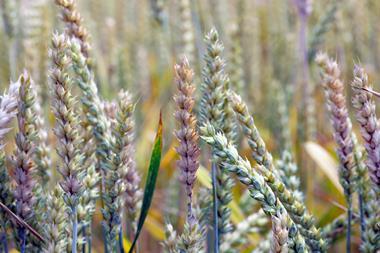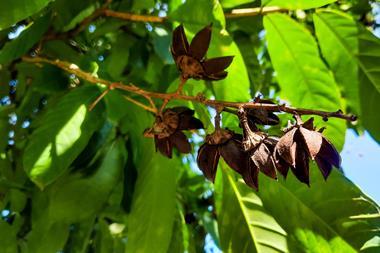Researchers have revealed the synthetic pathway that the Chilean soapbark tree, Quillaja Saponaria, follows to make saponins. They did it by installing genes for the pathway enzymes into a tobacco relative, Nicotiana benthamiana, to generate soapbark compounds in leaves. The effort was undertaken because some saponins – triterpene glycosides – are essential to some of the newer immune-boosting adjuvants in vaccines.
The saponin QS-21 is in ASO1, the adjuvant in GSK’s shingles and malaria vaccines. A mixture of QS saponins is also part of Matrix-M adjuvant, an ingredient in a flu vaccine, Novavax’s Covid-19 vaccine and a malaria candidate jab from the University of Oxford.

The complexity of saponins has meant that the best source is often wild tree bark. But a team led by Anne Osbourn, from the John Innes Centre in Norwich, UK, has uncovered the 16 enzymes needed to go from a linear precursor compound to β-amyrin, to oleanolic acid, and through to a complex intermediate hepta-saccharide saponin.
‘The QS-21 molecule, made in the soapbark tree, intrigued us because it is so structurally complex,’ says Osbourn. Her group started by sequencing the genome of the tree and then generated RNA sequence data to reveal which genes were most active in different tissues to piece together saponin biosynthesis.
Critically, the Osbourn lab used Agrobacterium to introduce genes into tobacco leaves for transient expression, allowing them to deduce which molecules the putative enzyme produced. ‘We got up to 20 genes all introduced on separate Agrobacterium strains into the plant,’ says Osbourn.
Plant genes encoding enzymes for the same biochemical pathway are often clustered within the genome and allowed them to pinpoint suspected pathway enzymes using an algorithm called plantiSMASH. Gas chromatography–mass spectrometry analysis of leaf extracts identified metabolites. And they used NMR for verification.
Sixteen enzymatic steps led to a precursor molecule for QS-7, QS-21 and other saponins. Some final steps proved challenging, involving some rare sugars, with D-fucose added to the C-28 position as a precursor sugar to the 30-carbon triterpene scaffold. Three additional changes to the C-28 sugar chain created QS-7.
One reason QS-21 is used in adjuvants is that it is the most abundant saponin in the soapbark tree. QS-7 looks promising as an adjuvant and has lower toxicity towards animal cells, the study scientists note. It has been held back from use in vaccines by its low abundance in Q. saponaria bark extracts, they add.
‘One of the things we’re now working on is ways of boosting QS-7 yields in the tobacco plant,’ says Osbourn, whose lab is also working on revealing the biosynthetic pathway to QS-21.

‘We can map out the routes to molecules that the tree makes, endeavor to recapitulate those and also potentially make new-to-nature adjuvant molecules by mixing and matching,’ she adds. Her group is a world leader in discovering how plants make terpene compounds and is working with a commercial partner on saponin adjuvants.
Ian Graham, a plant biochemist at the University of York, UK, says the paper does an excellent job of demonstrating cutting-edge technologies in plant genomics. ‘The discovery and functional characterisation of the 16 enzymes is a remarkable feat,’ he says. Their advances could now be used to generate saponins for vaccine adjuvants using a fermenter-based system, adds Graham. ‘They’ve got the tools now to generate a whole suite of different saponins that can be evaluated in in vitro assays and lab-based assays and on to clinical trials.’
References
J Reed et al, Science, 2023, 379, 1252 (DOI: 10.1126/science.adf3727)












No comments yet